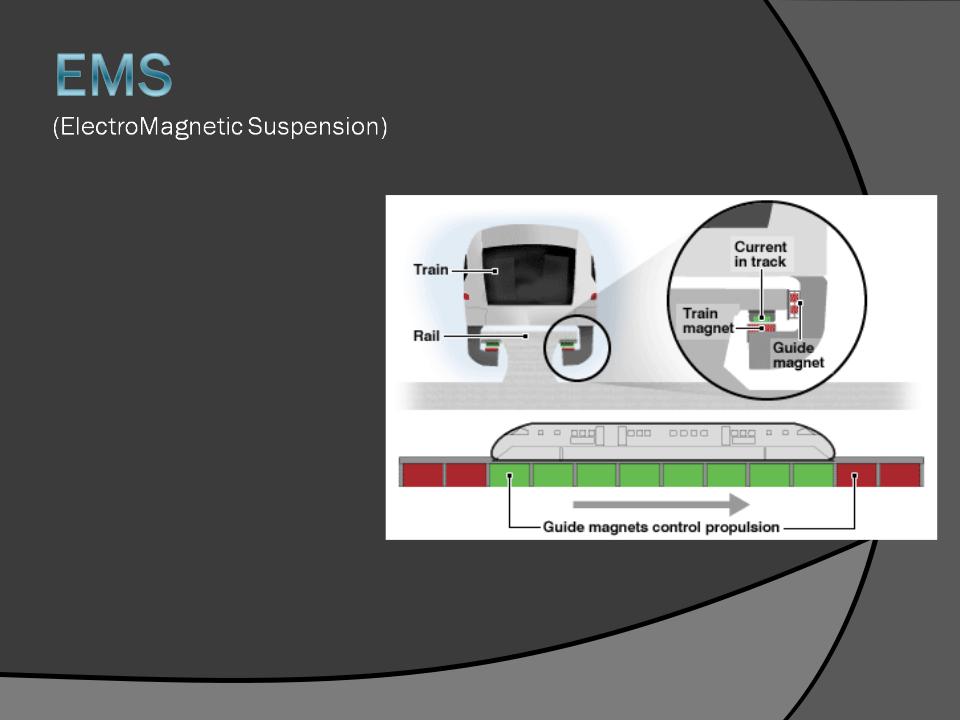The Technology
2 types of technologies are in use:
○EMS
○EDS
2 other types of technologies are studied
-Indutruck
-MDS
Principle : uses the attractive magnetic force of a magnet beneath a rail to lift the train up
Principle: uses a repulsive force between two magnetic fields to push the train away from the rail
Principle : Same system as the EDS, but the track is made of permanent magnets. Magnetic field placed under the train.
+++ |
--- |
No power requiered to |
- Wheels needed at slow |
activate the magnets |
speed |
Can levitate at low speed |
|
(5km/h) |
|
Lower Costs |
|
Cars slow down on their |
|
own |
|
Principle : Same system as the EMS, but the track is made of permanent magnets. Railwail must be built so that the train uses gravity to go forward.
No power requiered to activate the magnets
No outside monitoring of the space between the
Attrative force is stronger than repulsive force
Cars slow down on their own
system based on physics and mathematic calculations.
-Wheels needed at low speed
-guideway must be made to exact specifications and is very expensive
-Exists only on paper
1971: West Germany (90 kmph)
1972 : Japan (60 kmph)
1975 : West Germany (401.3 kmph)
1979 : Japan (517 kmph)











